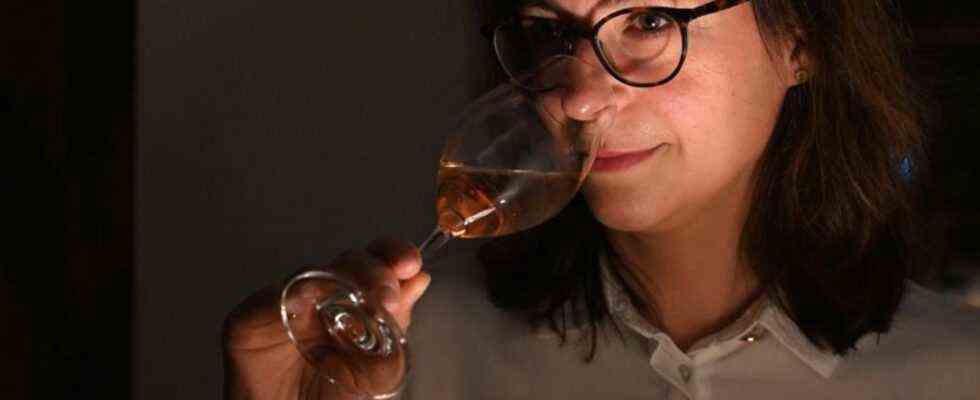Eat Drink
Great demand for rosé wines goes hand in hand with a new image
The winemaker Nadine Herres-Singer from the St. Laurentius sparkling wine estate in Leiwen on the Moselle tastes a rosé sparkling wine from their own production, which has received a special prize from the German Wine Institute. Photo: Peter Zschunke / dpa-Zentralbild / dpa
© dpa-infocom GmbH
Rosés from Germany are increasingly being produced in a more sophisticated way and are finding new fans. Sales and turnover are increasing, prices are still manageable.
Rosé wines are trendy: According to the German Wine Institute (DWI), both production and consumption have increased in recent years.
A changed image of the rosé wine can be observed, said DWI managing director Monika Reule recently at the award of a special rosé prize as part of the federal wine awards. In the meantime, rosé wines are no longer primarily light wines or even associated with the difficult term “women’s wine”, but increasingly more sophisticated and diverse food companions.
According to data from market researchers from the Nielsen Homescan Panel, rosé wines had a sales share of twelve percent in Germany and a sales share of eleven percent in the past year. Compared to 2019, this was an increase of one percentage point in each case. The amount of rosé wines registered for quality wine testing rose to around one million hectoliters in 2020, ten years earlier it was 768,000 hectoliters. Almost half of the rosé wines sold in Germany – 47 percent – come from domestic production, followed by wines from France and Spain, each with a market share of 13 percent.
“In addition to roses, which are easily accessible, there are also increasingly complex roses,” said the German wine queen Sina Erdrich. In the meantime, rosé wines are not only made from Pinot Noir, Dornfelder or Portugieser, but also from grapes from the Merlot and Cabernet Sauvignon grapes, which gives the rosé a certain spiciness.
The Zehe-Clauß winery from Mainz-Hechtsheim entered into this combination of grape varieties with its 2020 Rosé dry, which won first prize in the competition of the German Wine Institute. “Merlot and Cabernet Sauvignon ripen late, usually have healthy grapes and are a better fit for us in the face of climate change,” said winemaker Marcus Clauss of the German press agency. He left the red grapes in the mash for 24 hours until bottling, and ten percent of the award-winning wine was allowed to mature in small wooden barrels. A sales price of 7.20 euros shows that rosé wines tend to be underestimated, said DWI spokesman Ernst Büscher.
A special prize for the best rosé sparkling wine went to the 2019 Pinot Noir Crémant “Cuvée Nadine” from the Moselle, named after Nadine Herres-Singer from the St. Laurentius sparkling wine estate. The base wine fermented as Blanc de Noir received a dose of noble sweet wines after bottle fermentation. “We made the first sparkling wine from Pinot Noir in 1999 as red sparkling wine,” remembers the winemaker at the award ceremony in Mainz. “We’re smarter now, red champagne doesn’t work at all.”

